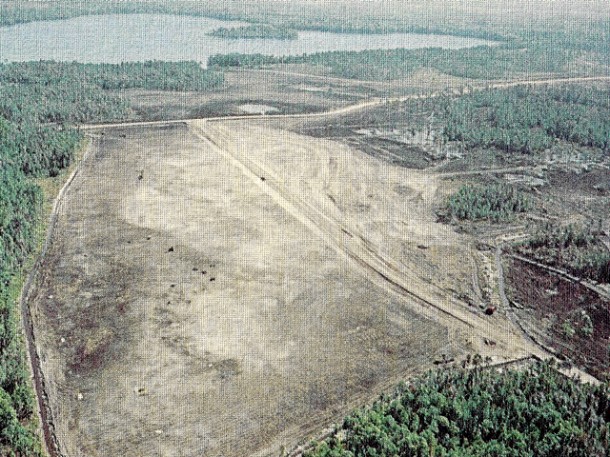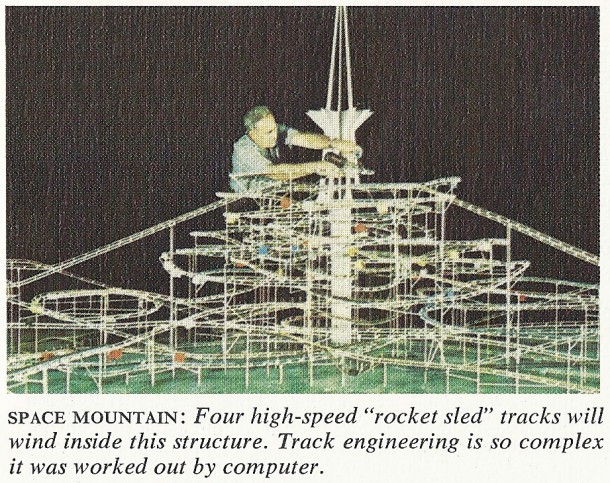There is an old saying that hindsight is 20/20, but when it comes to the rise and fall of companies, the view isn’t always so clear. Organizations are led by people and understanding their goals and motivations isn’t always easy.
Replacing those people, particularly key figures, can be extremely difficult when it comes to their creativity. Two prime examples are the Disney Company after Walt’s death in 1966 and Apple Computer with the loss of Steve Jobs. In both cases there was a large enough inventory of their ideas to pursue to carry the company for a few years, but most Disney historians agree that Walt’s shoes were very hard, if not impossible, to fill. As for Steve Jobs, Apple lost him once in 1986 and nearly lost the farm before his return ten years later. The jury is still out on the long term effects of his untimely death.
In 1966, there were at least three Disney ride systems under development which Arrow was involved with; Pirates of the Caribbean, The Haunted Mansion and Space Mountain;
Arrow had presented a four track concept for Space Mountain about 1964, but Walt’s death, and a difference of opinion with WDI about the ride’s energy management approach (WDI preferred full gravity), would delay the project until after Arrow’s sale to Rio Grande Industries.
Pirates was a hybrid; A mix of technology from El Aserradero at Six Flags Over Texas which opened in 1963 and It’s a Small World from the New York World’s Fair. Arrow’s Mill Race flume ride had also opened at Cedar Point in 1963. Flume rides became so popular that some parks began adding a second one to help reduce wait times. Cedar Point added Arrow’s S, and much of the 1970s, Arrow had a virtual monopoly on the log flume ride business, producing over 50 by 1979. Disney would not produce its own full blown flume ride until Splash Mountain in 1989.
The 1967 Disney Annual Report was filled with glowing statements regarding the company’s strength and vitality. Attendance records were being broken, with nearly 8 million guests. $60 million was invested in the park in the previous two years and was paying off. Plans for Walt Disney World were under way. Arrow would reprise its’ role there on Dumbo the Flying Elephant and the Big Thunder Mountain Railroad, which was the last time Disney would used Arrow for its coasters. Big Thunder at Tokyo Disneyland would be done by Arrow’s self-made rival Vekoma. This began a new partnership which would also provide the Rock ’n’ Roller Coaster, Expedition Everest, as well as Big Thunder and Casey Jr. at Euro Disneyland. (For more on the Arrow – Vekoma relationship, see chapter 8 of Building Disney’s Dream; Barbarians at the Gate.)

Arrow’s contribution to The Haunted Mansion was construction of the Omnimover, which had originally been developed for the Adventures Thru Inner Space attraction. Dana Morgan recalled that the Omnimovers, which were primarily designed by WED, were very complicated and difficult to make.

So, in retrospect Dick Nunis’ announcement to Arrow in 1971 that they were moving ride development in-house probably shouldn’t have come as much of a surprise. With Walt’s death, part of the glue that held the relationship together was gone. Disney had also gained significant experience in ride systems and had a huge blank slate to work on in Orlando. When Karl and Ed decided to sell Arrow to Rio Grande Industries in 1972, Arrow had significant revenues from other theme parks around the world and a growing family of flume rides and roller coasters to keep things going. Disney also wasn’t expressing interest in the type of coasters Arrow would become famous for; corkscrews. At age 62, Karl was also approaching retirement, so the parting of the ways probably didn’t create really bad feelings.
Here’s a great deal for you. Dexter’s full story about how Arrow Development helped build Disney’s theme parks is available as an Apple E-Book for just $4.99:
Building Disney’s Dream
Sharing is caring!






You must be logged in to post a comment.